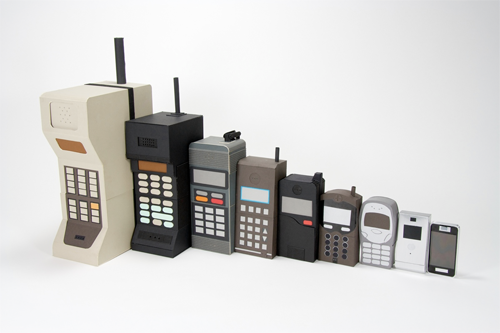Tomorrow today is already yesterday
What has been will be again, what has been done will be done again; there is nothing new under the sun.
Is there anything of which one can say, “Look! This is something new”?
It was here already, long ago; it was here before our time.
No one remembers the former generations, and even those yet to come will not be remembered by those who follow them.
(Ecc 1: 9-11)
What defines the new as new and turns it into old? – Or what turns a certain technology into mainstream?

We are in a time of rapid technological changes. The stages of development are getting smaller, while the evolution is expanding faster and faster.
This means, that people today have already witnessed countless models and releases of technological products, with only slight advancements. But the same people have also witnessed huge steps in the general development of technology and media in their lifespan.
In their book “New Media 1740 – 1915” Lisa Gitelman und Geoffrey B. Pingree provide an anthology of ten scholarly articles on the history of media. Their main focus is interesting, since they don’t focus on current technological inventions and present communication tools. They go some steps back in media history. The authors note, that in the growing field of “new media studies” or “digital media studies” it seems, as if all scientists only focus exclusively on a revolution by computer-mediated communication. Here the autors also mention the camera, and the gramophone, and also far more exotic but antique inventions. What is an optical telegraph, a zoetrope, a stereoscope, or an electric telegraph? Who can remember the times, when the physiognotrace, the phenakistoscope, and the phonogram were up to day and new media?
History of media
Gitelmann and Pingree offer a broad perspective on obsolesce and antique forms of technology and by doing so, they deepen our historical understanding of all media. By recovering different (and past) senses of media in transition the authors sharpen our critical awareness of how technology and media acquire meaning and power.
“All media were once new media” (p. 12)
Gitelman and Pingree struggle with a periodization of new media. By deconstructing the common posthistorical theorizing in media studies done in evolutionary steps, Gitelman and Pingree rise our awareness for “the new” and the “not so new anymore.” This deconstruction is also very fruitful when applied to the link of Media history and cultural history. Our cultural pace is also often defined by the communicational technologies around us. Our communication is transmitted via the common and current channels of “new media”. To Gitelman and Pingree, the “newness” lies not so much in the in the novelty of the technological innovations itself, but more in the first interaction within a given social milieu. The authors show is in selected historical connection points between media and their discursive constructions. In the historical comparison it is evident, that simultaneously to the emergence of a new media, patterns for justification came up, to explain, that new media would destroy old and outdated forms of communication.
Catastrophe?
This week my department of my regional church hosted a social media conference. It was intended as a general information and introduced into this special field of communication, especially for the colleagues, who are not into new media and social media yet.
Listening to the keynotes and workshops of the speakers and social media specialists, I was thankful for the new perspectives “New Media 1740 – 1915” provided. One very critical speaker and other habitual objection raisers usually would have had the potential to provoke me and give me a hard time listening. But though the lens of Gitelman and Pingree, I was able to understand their criticism. It was no rational and honest examination of new media, it was a very emotional reaction. It was a unuttered justification pattern to dismiss “the new”, because this might change hitherto communication traditions. Some are thrilled by the new possibilities and to some it is (to speak with a keynote slide of a critical speaker) a catastrophe.
The word became flesh
As Christians we are in a tradition of a very communicative religion.
If we take the strong link serious, which Gitelman and Pingree point out to; the link between culture and media, we have no choice to discuss the “if” of new media, but more the “how” in communicating with each other and also in communicating the gospel. Nothing in new media is new. The cultural history of media evaluates the way how people store and transmit date und human expression within particular cultural contexts. This is a very theological and biblical process.
I am wondering about the role for us as theologians in this discourse:
1. What is the impact of this discussion on our call to be communicators of the gospel in different languages, ways, channels and media?
2. What is the impact of this discussion on our interpretation of our own hermeneutical history in communication?
3. How can we ease the fear of the habitual objection raisers, who are scared of the “new” in new media?
…
Lisa Gitelman and Geoffrey B. Pingree, New media, 1740-1915, Media in transition. (Cambridge, Mass.: MIT Press, 2003), 12.
Leave a Reply
You must be logged in to post a comment.